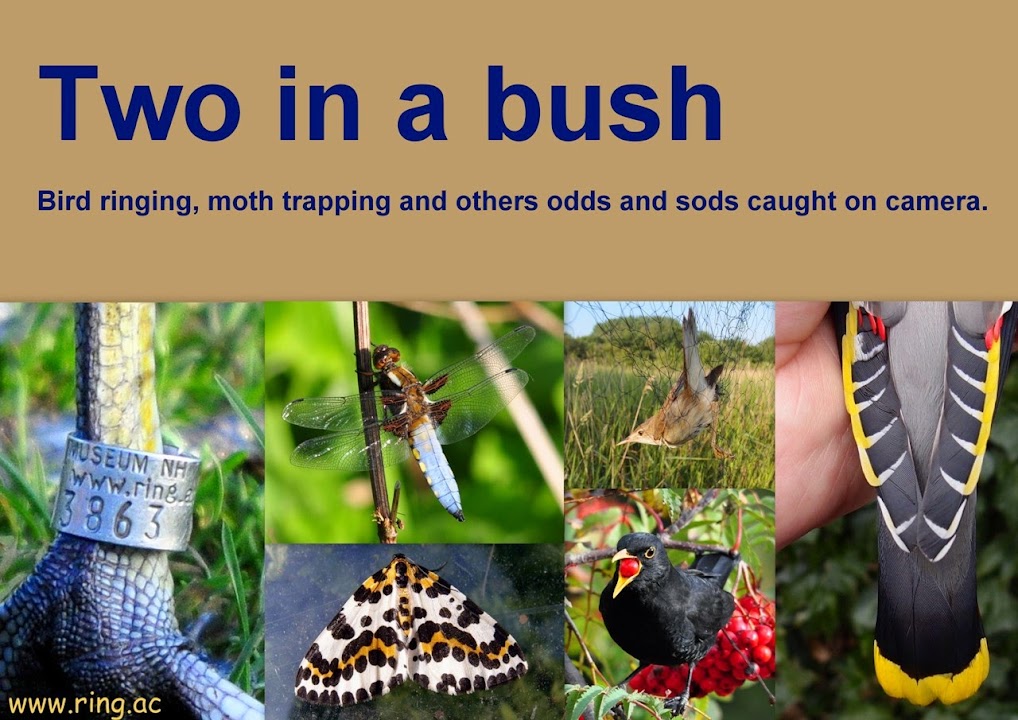So enough about that stuff, this blog is about birds and other wildlife and I have managed to fit in some ringing despite all the other things that have been going on. Back in late May I completed my Starling RAS project for this year and it was another successful season with a total of 168 different adults encountered (31 new birds and 137 colour-ringed birds re-sighted). Starlings appear to have had a good breeding season and I have ringed more juvenile Starlings in the garden than in any previous year with the total currently standing at 489 (it increased by 3 whilst writing this post). I don't usually catch many juvenile Starlings after the middle of June and, initially, that was the case again this year but numbers visiting the feeders started to pick up again in late July and small numbers have been making regular raids on the fat feeders since then. This has resulted in 85 being ringed since late July compared to only 25 over the same period last year.
Visits to other sites have been less frequent than in other years but I started to rectify that once we got into August. A visit to the site at Billinge on 30th August was the most productive of the recent sessions and is worthy of specific mention. I had been joined by Mark, who was over from America to visit family, and we set 3 nets in the top willows. Conditions were ideal for mist netting, being calm and largely overcast, and while ideal netting conditions don't always coincide with good numbers of migrants this was one day when they did. Blackcaps were the most numerous species and the total of 20 ringed was a new day record for the site. Twenty isn't a big catch by the standards of some sites but it is for the Billinge site which isn't blessed with much in the way of berries. The most unusual captures were a male Redstart, which Mark was especially pleased to see in the hand, and 2 Spotted Flycatchers which were caught just after he had to leave, well you can't win them all. A catch of 9 Willow Warblers was also a decent number for late August. A total of 60 birds were ringed which broke down as follows: Blue Tit 10; Great Tit 5; Chiffchaff 9; Willow Warbler 9; Blackcap 20; Robin 2; Spotted Flycatcher 2; Redstart 1; Goldfinch 1; Yellowhammer 1.
 |
| 1cy male Redstart |
 |
| 1cy Spotted Flycatcher |

No comments:
Post a Comment